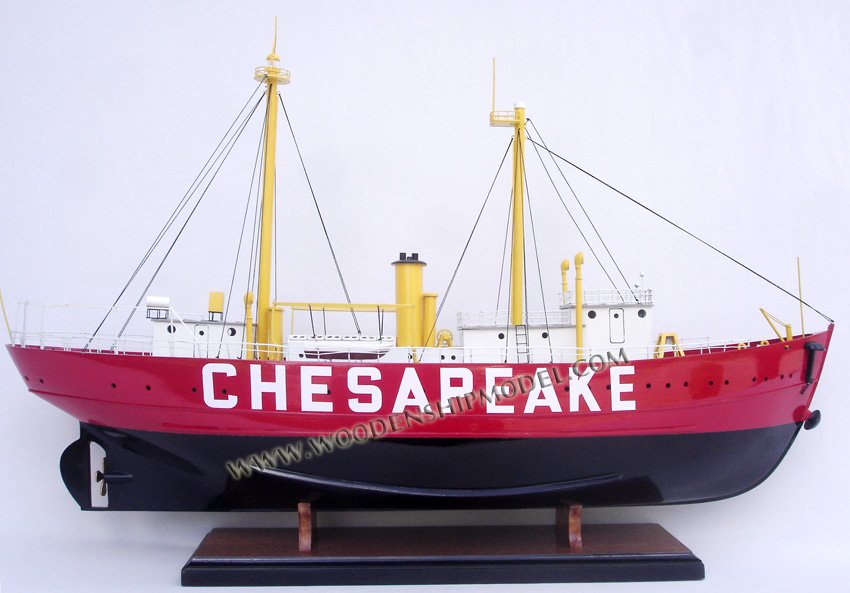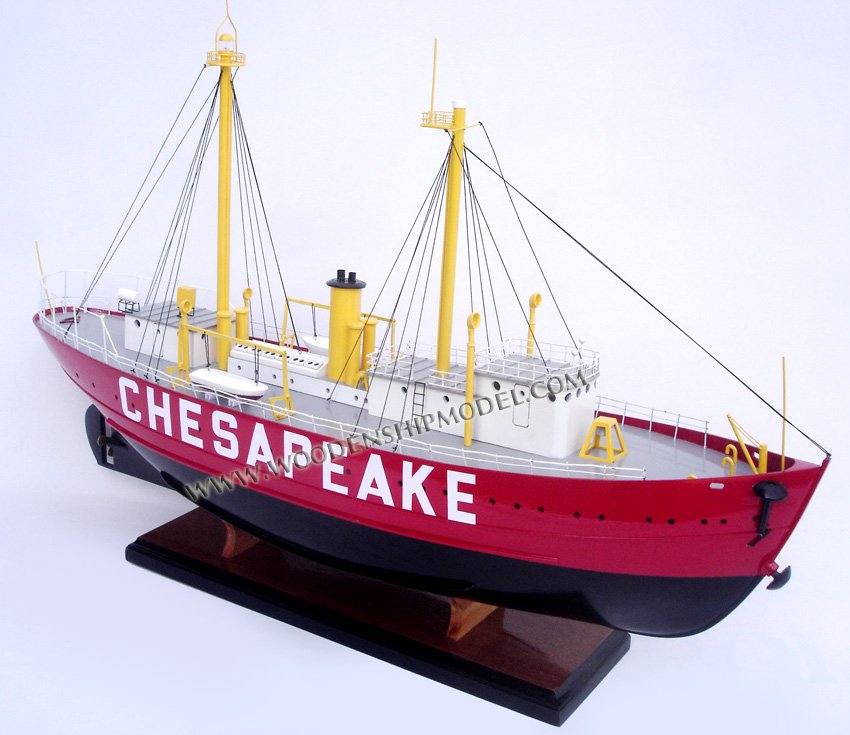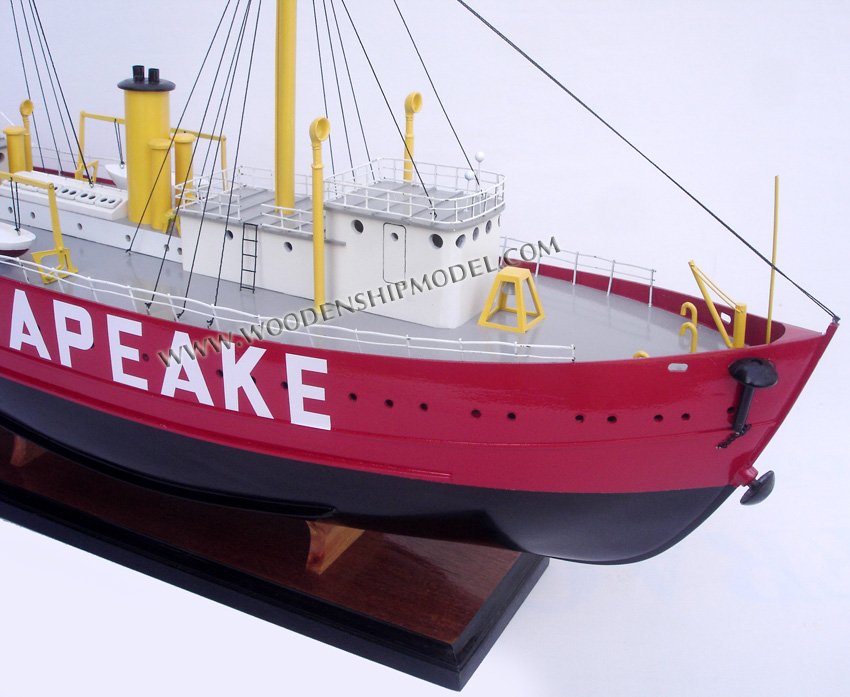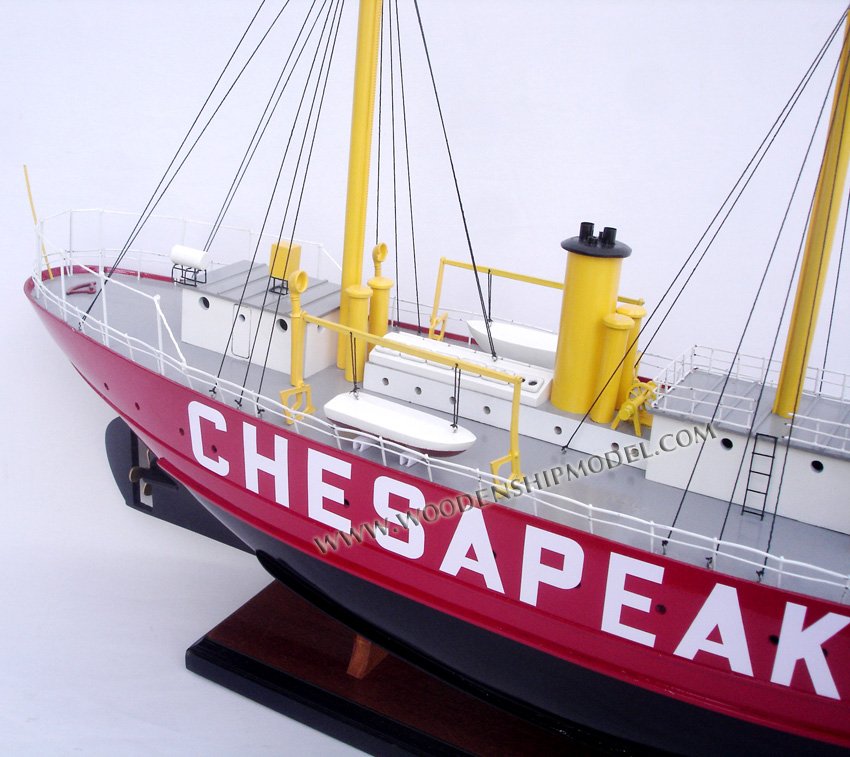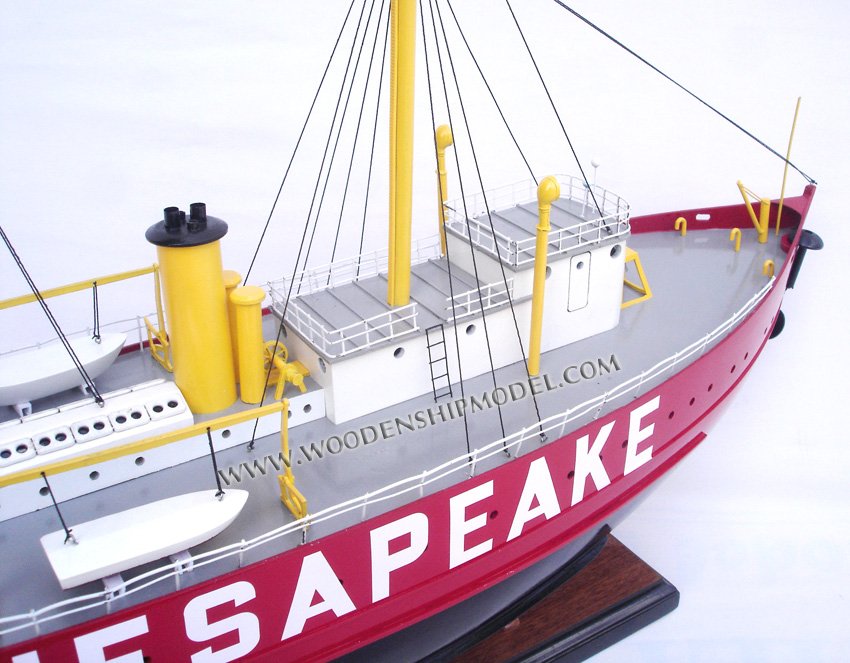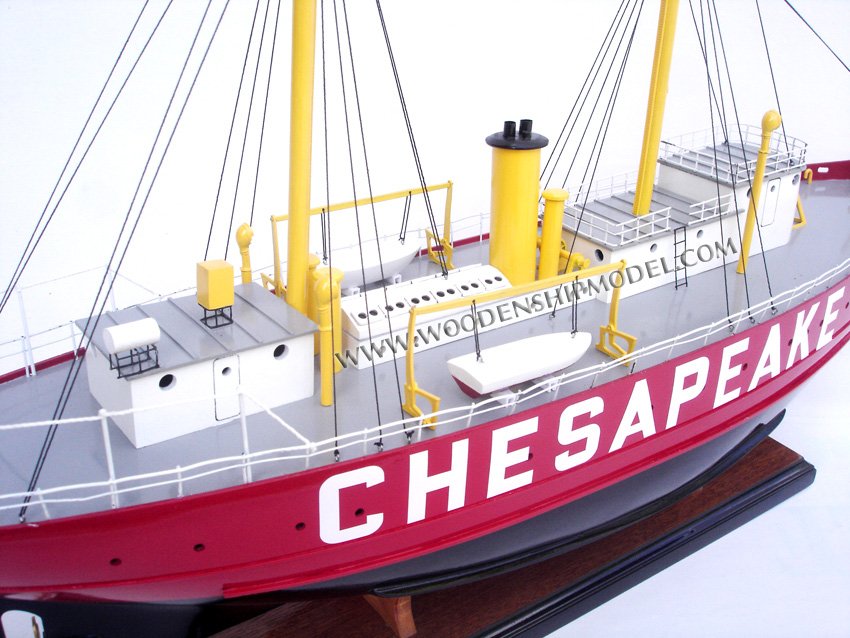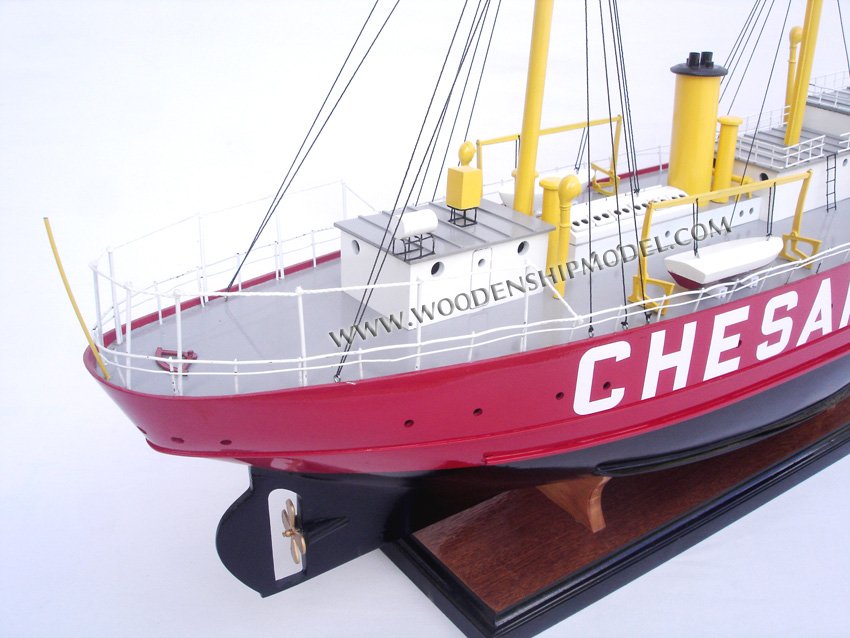|
HISTORY
United
States lightship Chesapeake (LV-116/WAL-538/WLV-538) is
owned by the National Park Service and on a 25-year loan to
Baltimore City, and is operated by Historic Ships in
Baltimore, Maryland. Since 1820, several lightships have
served at the Chesapeake lightship station and have been
called Chesapeake. It was common for a lightship to be
reassigned from one Lightship Station to another and thus
"renamed" and identified by its new station name. Even
though the "name" changed during a Lightship's service life,
the hull number never changed. The United States Coast Guard
assigned new hull numbers to all lightships still in service
in April 1950. After that date, Light Ship / Light Vessel
116 was then known by the new Coast Guard Hull number:
WAL-538. In January 1965 the Coast Guard further modified
all lightship hull designations from WAL to WLV, so
Chesapeake became WLV-538.
Chesapeake had many redundant systems in order to maintain
her position through most storms. The 5,000 pounds (2,300
kg) main anchor was backed up by a second 5000 pound anchor
attached to the side of the ship. The 30,000 candela main
light was also backed up with a secondary lamp and the Radio
Locator Beacon also had a backup system. On more than one
occasion (in 1933, 1936, and 1962) the main anchor chain
snapped during violent storms and the ship had to use her
engines to stay in place and drop her second anchor.
History
Built in 1930 at Charleston Drydock & Machine Co in
Charleston, S.C. for $274,434.00, Chesapeake took on the
name of whatever station where she was anchored. The ship
was also absorbed into the Coast Guard in 1939, as were all
vessels in the United States Lighthouse Service.
Service in the US Coast Guard meant a pay cut for the
sailors aboard Chesapeake and other Lightships, as well as
the requirements for the crew to pass Coast Guard physical
exams and wear uniforms. Coast Guard officers, usually a
Warrant Bos'n, were also placed in command of the
lightships, which meant a more efficient, orderly and strict
operation. It did also, however, mean better supplies and
training reached the crew. During WWII, Chesapeake was based
out of Sandwich, Massachusetts, where she served as an
examination and guard vessel at the north entrance of the
Cape Cod Canal and helped protect the important port of
Boston.
In the 1960s with the introduction of automated buoys as
well as permanent light stations, the lightship fleet was
slowly mothballed. Chesapeake left her station at the mouth
of the Chesapeake Bay in September 1965 when she was
replaced by a large, manned light tower similar to an oil
rig. This station was helicopter accessible and was easier
to maintain than a lightship. Eventually the light tower was
fully automated. Eight lightships were built after
Chesapeake.
Chesapeake 's last tour of duty was at the mouth of the
Delaware Bay from 1966 to 1970 where she was named
"DELAWARE". A large 104 ton buoy beacon replaced her at this
station in 1970. After leaving Delaware Bay, Chesapeake was
moored in Cape May, New Jersey until her decommissioning on
6 January 1971. She was then transferred to the National
Park Service and used as a seagoing environmental education
classroom until she was handed over to the city of Baltimore
in 1982. In 1988 Chesapeake became part of the Baltimore
Maritime Museum, now the Historic Ships In Baltimore museum
and is moored at Pier 3 in Baltimore's Inner Harbor. She is
open for touring after a paid admission to the Museum.
Chesapeake was listed on the National Register of Historic
Places on 1 August 1980 and was designated a National
Historic Landmark on 20 November 1989. Chesapeake and her
companions are major contributing elements in the Baltimore
National Heritage Area.
|

